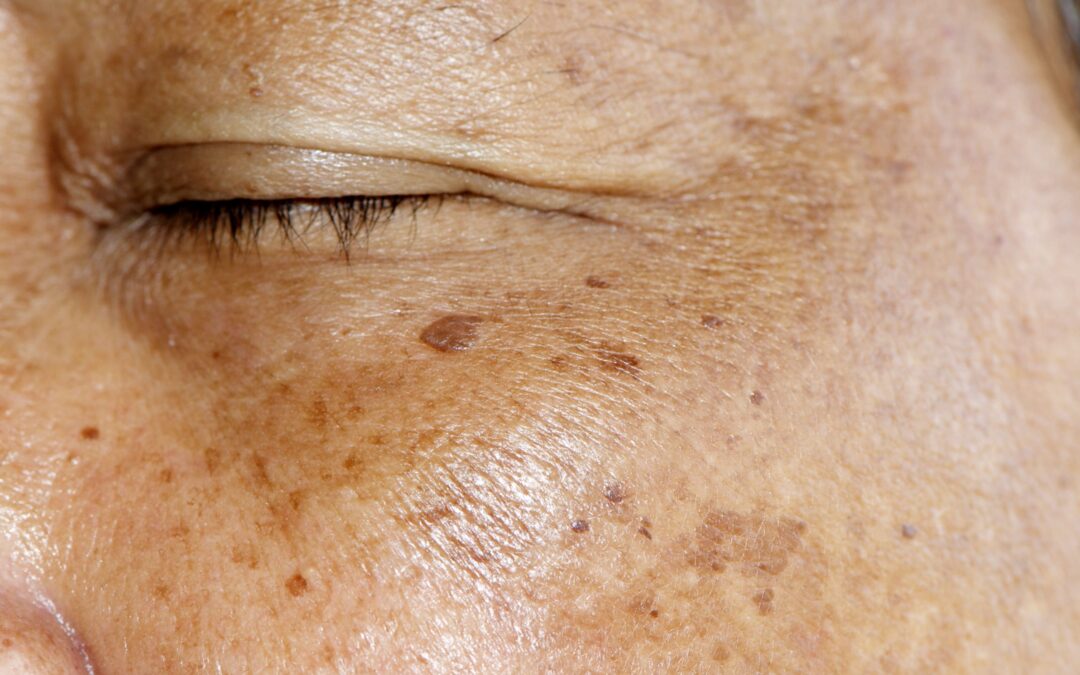Melasma is a common skin condition that causes dark, discolored patches on your skin.
It’s also called chloasma, or the “mask of pregnancy,” when it occurs in pregnant women. The condition is much more common in women than men, though men can get it too. 90% of people who develop melasma are women.
This condition causes patches of discoloration. The patches are darker than your usual skin color and it typically occurs on the face and is symmetrical, with matching marks on both sides of the face. Other areas of your body that are often exposed to the sun can also develop melasma.
Brownish colored patches usually appear on the:
- cheeks
- forehead
- bridge of the nose
- chin
It can also occur on the neck and forearms. The skin discoloration doesn’t do any physical harm, but cosmetically it may be of concern. It isn’t totally clear what causes melasma but new research indicates it is much more complex than previously thought. There appears to be a very coordinated interplay, within the skin, with sunlight exposure in predisposed individuals and free radical formation, production of inflammatory proteins, degeneration and reduction of collagen synthesis, and the increased activity of melanocytes and resultant melanin/pigment production. Darker-skinned individuals are more at risk than those with fair skin. Estrogen and progesterone sensitivity are also associated with the condition. This means that birth control pills, pregnancy, and hormone therapy can all be triggers. Stress and thyroid disease are also thought to be causes of melasma.
A visual exam of the affected area is often enough to diagnose this condition. To rule out specific causes, your healthcare professional might also perform some tests. Rarely a biopsy might be suggested.
Treatment for melasma can be difficult and incomplete. For some women, it disappears on its own. This typically occurs when it’s caused by birth control pills. There are creams your healthcare professional can prescribe that can lighten the skin and reduce the activity of the pigment-producing cells. They might also prescribe topical steroids to help lighten the affected areas.
Probably the most effective means of treatment is with lasers. Various wavelength and pulse duration lasers can address the skin abnormalities at the cellular level. Newer laser protocols, based on a better understanding of the pathophysiology of the condition, are the future of melasma treatment. These procedures don’t guarantee that it won’t come back, and some cases can’t be completely lightened.
You might have to return for follow-up visits and procedures as well as stick to certain skin treatment practices to reduce the risk of the melasma returning. These include minimizing your sun exposure and wearing sunscreen daily.
While not all cases of melasma will clear up with treatment, there are things you can do to make sure the condition doesn’t get worse and to minimize the appearance of the discoloration. These include:
- using makeup to cover areas of discoloration
- using non-hydroquinone based bleaching agents
- wearing a daily sunscreen with SPF 30 or greater
- wearing a wide brim hat that shields or provides shade for your face
If you’re self-conscious about your melasma, call us at 1-844-800-2919 to set up your consultation or learn more about skin rejuvenation options.

